I'm trying to make Android Studio and the associated emulator via AVD to work under Archlinux.
I've just installed android-studio, android-sdk, and all the dependencies that Android Studio requires. When I try to start the freshly created emulator (with no particular settings), here's the error messages I receive:
17:25 * daemon not running; starting now at tcp:5037
17:25 Emulator: Couldn't statvfs() path: No such file or directory
17:25 * daemon started successfully
17:25 Emulator: Warning: libpng warning: iCCP: known incorrect sRGB profile ((null):0, (null))
17:25 Emulator: Warning: libpng warning: iCCP: known incorrect sRGB profile ((null):0, (null))
17:25 Emulator: qemu-system-x86_64: warning: host doesn't support requested feature: CPUID.80000001H:ECX.abm [bit 5]
17:25 Emulator: qemu-system-x86_64: warning: host doesn't support requested feature: CPUID.80000001H:ECX.abm [bit 5]
17:25 Emulator: qemu-system-x86_64: warning: host doesn't support requested feature: CPUID.80000001H:ECX.abm [bit 5]
17:25 Emulator: qemu-system-x86_64: warning: host doesn't support requested feature: CPUID.80000001H:ECX.abm [bit 5]
17:25 Emulator: Warning: QObject::moveToThread: Current thread (0x593c240) is not the object's thread (0x5a7d800).
17:25 Emulator: Cannot move to target thread (0x593c240)
17:25 Emulator: ((null):0, (null))
17:30 Emulator: emulator: ERROR: detected a hanging thread 'QEMU2 main loop'. No response for 15000 ms
17:30 Emulator: emulator: ERROR: detected a hanging thread 'QEMU2 CPU0 thread'. No response for 15000 ms
17:30 Emulator: emulator: ERROR: detected a hanging thread 'QEMU2 CPU1 thread'. No response for 15000 ms
17:30 Emulator: emulator: ERROR: detected a hanging thread 'QEMU2 CPU2 thread'. No response for 15000 ms
17:30 Emulator: emulator: ERROR: detected a hanging thread 'QEMU2 CPU3 thread'. No response for 15000 ms
17:30 Emulator: emulator: ERROR: detected a hanging thread 'QEMU2 main loop'. No response for 15000 ms
17:30 Emulator: Process finished with exit code 139 (interrupted by signal 11: SIGSEGV)
I've reinstalled everything twice. I've also checked this topic without success. I don't understand most of these messages, so I'm a bit lost. I tried to start the emulator from the command line with the command
/opt/android-sdk/emulator/emulator -avd Android_Wear_Round_API_P, it gives me the same result.
I'd be very glad to get some ideas on what the problem could be.
EDIT
Here are the elements installed, in case it's relevant:

EDIT2
The type of emulator I'm trying to run is for WearOS. As a test, I tried to create an Android Nexus one. When graphics are set to 'Software', it works. Unfortunately, I can't change this option for the WearOS device. Therefore, it keeps crashing. Sometimes, it even completely crashes my system. My screen freezed, I have to manually reset my computer.
